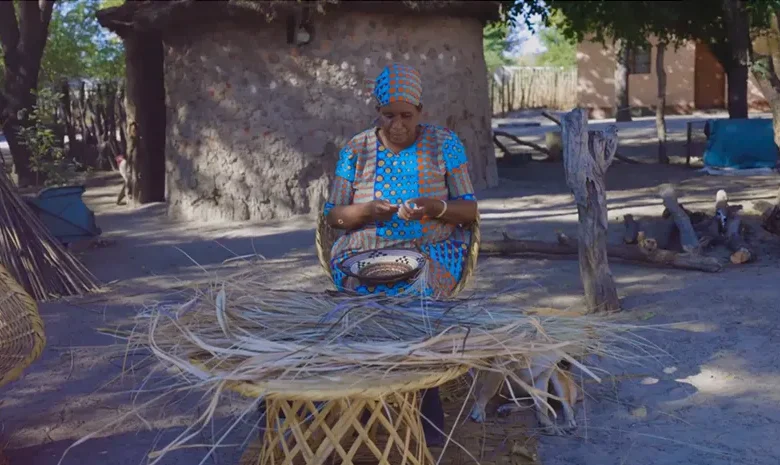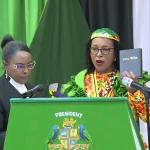Black Caribs (Garifuna)

The Black Caribs, now widely known as the Garifuna people, are descendants of Indigenous Kalinago (Caribs) and Africans who settled primarily on the island of Saint Vincent. During the 17th and 18th centuries, African slaves escaped or were shipwrecked and found refuge among the Kalinago. Over time, they intermarried, forming a unique Afro-Indigenous group that came to be known as Black Caribs.
The Garifuna developed their language, culture, and political autonomy on Saint Vincent. They fiercely resisted British and French colonization, culminating in a series of conflicts known as the Carib Wars. After the British gained complete control of Saint Vincent, they forcibly deported thousands of Black Caribs in 1797 to Roatán, Honduras. Today, their descendants are spread across Central America in countries like Belize, Guatemala, and Nicaragua.
Cultural Parallels and Kalinago Kinship in Dominica
While Dominica was never a central stronghold of the Black Caribs, it shares ethnic and cultural ties through the Kalinago people, who still reside in the Kalinago Territory in the island’s northeast. The Kalinago of Dominica and the Caribs of Saint Vincent both descend from the same ancestral Amerindian populations and maintained trade and communication across islands during pre-Columbian and early colonial times.
This kinship created cultural and strategic alliances among the islands during the Caribbean’s resistance movements. Oral traditions among Dominica’s Kalinago speak of visits from other islands, shared rituals, and even joint defensive efforts against European invaders. It is likely that Black Caribs fleeing Saint Vincent—especially during or after the Carib Wars—would have sought refuge in other Caribbean territories, including Dominica.
Resistance and Shared Colonial Opposition
The history of Dominica in the 18th century is marked by resistance to European colonization, especially in its interior and eastern regions, where both African maroons and the Kalinago found refuge. These populations waged guerrilla warfare against the British and French. Though the Black Caribs were not a recognized population in Dominica, the spirit of resistance that they embodied mirrored Dominica’s own struggles during events like the First Maroon War, Kalinago uprisings, and ongoing land conflicts with plantation owners.
British colonial administrators often treated the Caribs of Saint Vincent and the Kalinago of Dominica with similar policies—viewing them as threats, resisting both military and religious conversion efforts. This further connects their histories within the context of imperial suppression and survival.
Linguistic and Cultural Traces
The Garifuna language, an Arawakan-based dialect with French, African, and Spanish influences, shares some ancestral similarities with the Kalinago language once spoken in Dominica. Though the Kalinago language has largely faded in Dominica, remnants of shared vocabulary and oral storytelling traditions remain.
Culturally, the Garifuna continue to practice traditional drumming, dance, and community rituals that bear resemblance to early Kalinago customs. Visitors to the Kalinago Barana Aute cultural center in Dominica will find that some ceremonial structures, food preparations, and social organization patterns echo those preserved in Garifuna communities of Central America.
Modern Recognition and Cultural Bridging
In recent years, there have been efforts to acknowledge the shared heritage between the Garifuna people and the indigenous communities of Dominica. Cultural exchanges, scholarly visits, and joint festivals have highlighted the historical connections and mutual respect between both groups.
Garifuna delegations have visited Dominica’s Kalinago Territory, and Kalinago representatives have participated in heritage preservation programs alongside Garifuna leaders in Belize and Honduras. These bridges are helping rebuild fragmented histories, especially those disrupted by colonization and forced migration.
Possible Migration to Dominica
While direct historical evidence of large-scale migration of Black Caribs to Dominica remains limited, it is plausible that during the height of the Carib Wars and in the aftermath of Saint Vincent’s conflicts, small groups or families of Black Caribs may have sought refuge in Dominica. The island’s mountainous terrain and established Kalinago settlements made it a natural safe haven for those fleeing colonial repression.
The southern and eastern coasts of Dominica, especially around Salybia, Atkinson, and Castle Bruce, were known hideouts for maroons, runaways, and Amerindians resisting slavery and European control. Oral traditions and family lineages in those regions may contain unrecorded ties to displaced Black Caribs.
Continuing the Legacy
Though the Garifuna are not an official ethnic group in Dominica today, their story resonates deeply with the country’s ethnic mosaic and anti-colonial legacy. The shared Kalinago ancestry, resistance narratives, and cultural continuity place Dominica in the broader regional context of Afro-Indigenous survival and transformation.
Both communities continue to celebrate resilience through storytelling, land preservation, and the promotion of heritage-based tourism. Understanding this connection enriches the narrative of Dominica’s place in Caribbean history—not as a bystander, but as a kindred land to a people shaped by endurance and cultural fusion.




